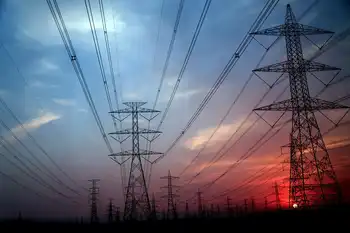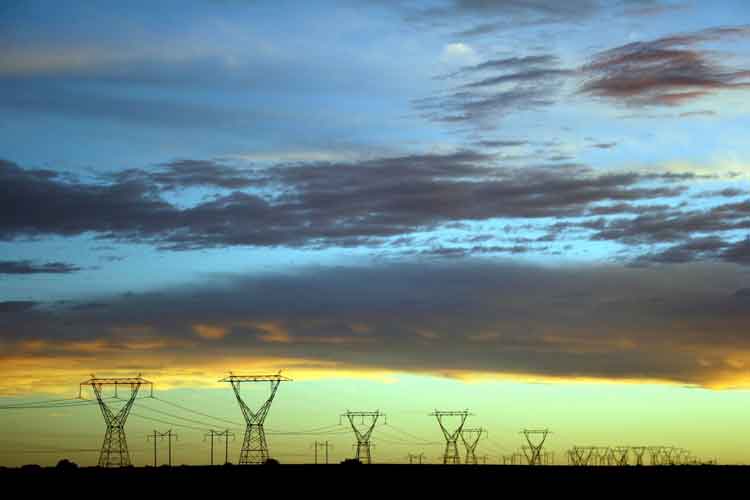Offshore wind would boost economy: report
TORONTO, ONTARIO - Ontario could create new industries, reinvigorate old ones, and generate thousands of new jobs over the next 15 years by building a vibrant offshore wind market around the Great Lakes, according to a report prepared by the Conference Board of Canada.
The board estimated that the installation of a few hundred offshore wind turbines – or 2,000 megawatts of capacity — would add more than $4.8 billion to Ontario’s GDP and create at least 55,000 person-years of employment between 2013 and 2026.
“The growth to 2,000 megawatts over 15 years is a conservative estimate of the market potential,” it said.
Over time, it said, much more could be developed as the ability to connect to OntarioÂ’s grid opens up and installation costs fall.
The report was sponsored by wind manufacturer Vestas Offshore, a wind energy company. The Conference Board said the reportÂ’s conclusions are its own, not those of Vestas, citing its history as an independent, non-partisan think-tank.
The board said its analysis assumed that at least 55 per cent of project costs would go toward local resources. Current rules under OntarioÂ’s feed-in-tariff program for renewable energy will require a minimum 50 per cent local content as of January 1, 2012.
Offshore wind farms benefit from the higher and more consistent wind speeds found over open water, but the difficulty of constructing in such a harsh environment makes them more expensive to develop than onshore projects.
Still, Michigan and New York are among several U.S. states that are also looking to capture an early lead in the market as a way to lock down jobs and new manufacturing.
Last month, Massachusetts regulators approved a contract under which local utility National Grid agreed to pay 18.7 cents for half of the electricity expected to come from the controversial Cape Wind offshore project in Nantucket Sound. The project, however, continues to be bogged down by lawsuits and regulatory challenges.
Unlike in Europe, where nearly a thousand turbines are already in operation offshore, North America still does not have a single offshore turbine installed off coastal waters or in the Great Lakes.
“We’re hearing a lot of talk, but not real activity,” said Scott Keating, who heads up North America sales for Vestas’ offshore business.
Ontario, at least from a policy perspective, remains a leader for now. Last year it guaranteed to pay 19 cents per kilowatt-hour for electricity generated from offshore wind projects, part of the provinceÂ’s feed-in-tariff program for green energy. No other jurisdiction has such an offer.
The rate is higher than the 13.5 cents currently paid to onshore wind projects, but less than half of what large solar projects can receive.
Since 2004, the province has received 144 applications to develop projects in the Great Lakes, but only one — a 300-megawatt offshore wind farm near Kingston’s Wolfe Island — has received a power-purchase contract from the Ontario Power Authority.
Many planned projects could be at risk after the provinceÂ’s environment ministry proposed in June rules that would prevent wind turbines from being closer than five kilometres from shore.
The setback rule, as well as limited capacity on the power grid, could be the two biggest barriers to future growth.
The Conference Board said its analysis is based on six offshore projects expected to go into service between 2015 and 2026, which together would attract more than $10 billion in private investment.
Of the jobs expected to be created, half would be supporting services, such as transportation, while 25 per cent would come from construction and 20 per cent from manufacturing.
Ontario’s steel and cement industries would enjoy a big boost. “The tower and foundation are bulky components that use steel and concrete. This makes them difficult to ship and more likely to be produced locally when possible,” according to the report.
John Kourtoff, chief executive of Trillium Power Wind Corp., which wants to develop its first project in Lake Ontario, said a new marine industry would be needed to support offshore development.
“We have a very weak marine infrastructure because we never needed it beyond just transporting goods,” said Kourtoff. “So we need to build that new industry, and that’s going to create jobs and opportunity.”
Related News

Working From Home Will Drive Up Electricity Bills for Consumers
TORONTO - Household electricity bills are set to soar, thanks to the millions of people now working at home to avoid catching the coronavirus.
Running laptops and other home appliances will cost consumers an extra 52 million pounds ($60 million) each week in the U.K., according to a study from Uswitch, a website that helps consumers compare the energy prices that utilities charge.
For each home-bound household, the pain to the pocketbook may be about 195 pounds per year extra.
The rise in price for households comes even as overall demand is falling rapidly in Europe, with wide swaths of the economy shut…




